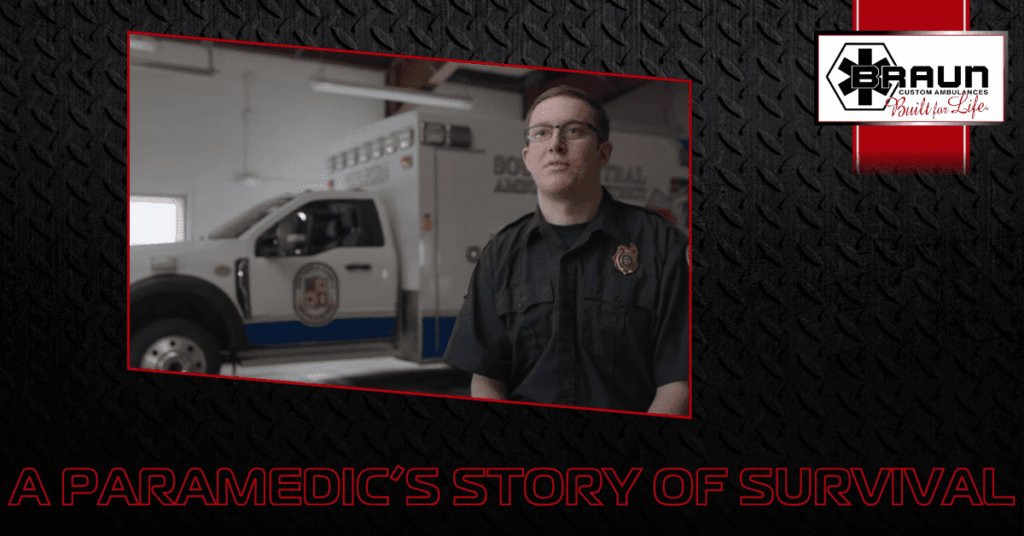For over 20 years, our customer South Central Ambulance District has trusted custom-built Braun Ambulances from Penn Care. Hear firsthand how that decision made a life-saving difference and discover one paramedic’s powerful journey of resilience, the lessons he’s learned, and the heartfelt message he has for Braun Ambulances. On the night of September 25, 2023, Jesse Sopko’s life was violently and irrevocably changed. A paramedic with South Central Ambulance, Jesse was responding to what should have been a routine call. But in an instant, routine turned to chaos.
While responding to a non-emergent call in his Braun Chief XL, Jesse’s ambulance was T-boned by a speeding driver. The force of the crash sent the rig rolling. Inside, Jesse suffered severe injuries, including numerous fractures and a traumatic brain injury. Despite the mayhem and devastation, one thing remained unshaken: the structural integrity of the ambulance.
In his testimonial, Jesse shares how surreal it feels to now step back into a Braun, knowing it’s the very vehicle that preserved his life. He says that returning to the same model that protected him brings peace of mind—a kind of trust that’s hard to put into words. For him, continuing to work in a Braun-built unit isn’t just a professional decision. It’s deeply personal.
Braun’s commitment to being Built for Life has never rung more true. With our exclusive SolidBody™ Construction and industry-leading durability, Braun Ambulances are engineered to withstand the unthinkable—and Jesse’s story is living proof. “It was built to save my life that night, and it did exactly what it was built to do,” he says.
He doesn’t shy away from difficult truths. He speaks candidly about the fact that he wasn’t wearing his seatbelt and believes that simple act could have lessened his injuries. Now, he urges fellow EMS providers to take that one small precaution that can make all the difference. “Wear your seatbelt,” he says, not just as advice—but as a plea, born from experience.
As he reflects on his journey back to work, Jesse shares what Braun’s motto means to him now. Built for Life isn’t just a slogan. It’s a promise—one that was fulfilled when he needed it most. The ambulance wasn’t just built to last. It was built to protect. Built to endure. Built to save.
And to the men and women who assemble these lifesaving vehicles, Jesse offers a message that hits straight to the heart.
“Thank you for showing up to work. Thank you for putting your effort and your heart into building these, because it saved someone else’s family from an extreme level of heartbreak,” Jesse says. “And that should really be something to pat yourself on the back for and something to take home in pride.”
Jesse Sopko’s story is one of tragedy, strength, and hope. It’s also a story of why we do what we do at Braun. Because at the end of the day, we’re not just building ambulances. We’re building vehicles that protect the heroes inside—vehicles that are truly Built for Life.
Watch Jesse’s full testimonial to hear his powerful story in his own words.



